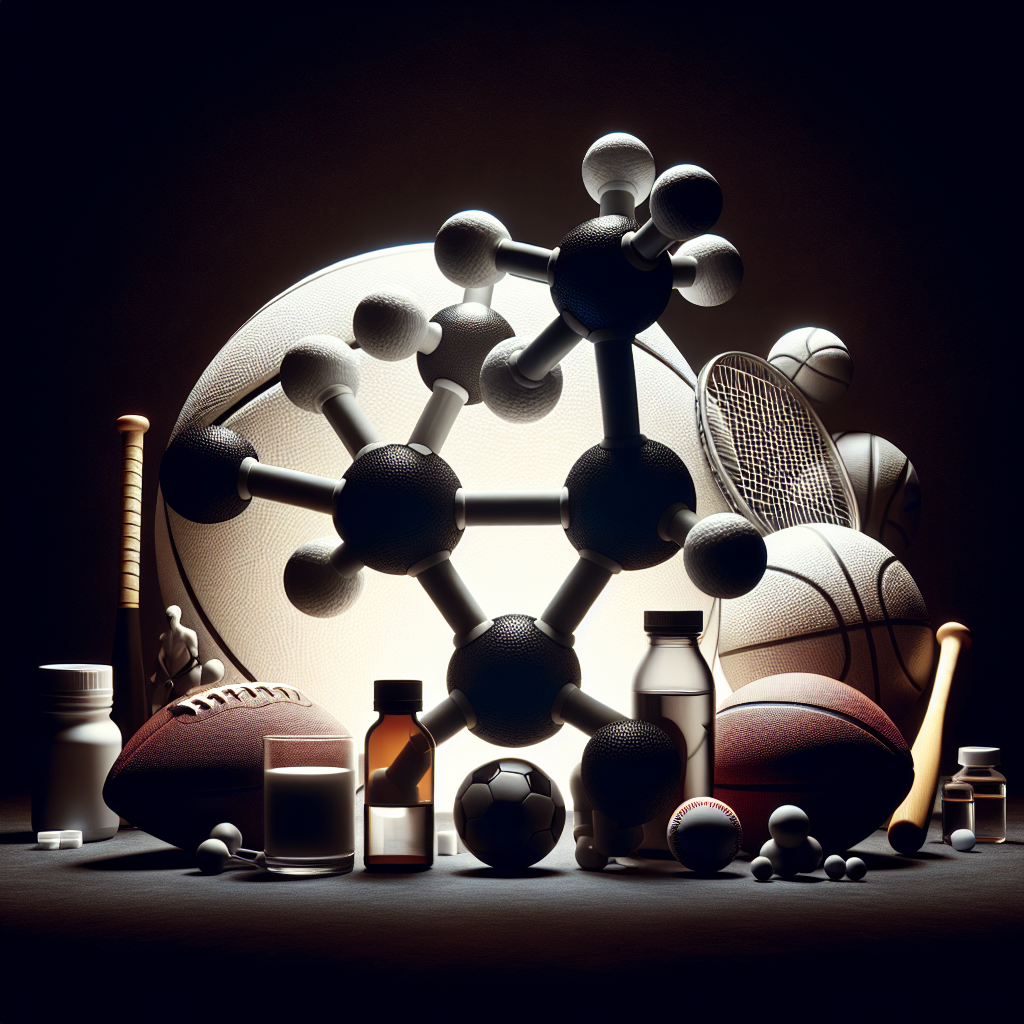-
Table of Contents
Mibolerone: A Potential Hidden Doping in the Sports World
The use of performance-enhancing drugs in sports has been a controversial topic for decades. Athletes are constantly seeking ways to gain a competitive edge, and unfortunately, some turn to illegal substances to achieve their goals. While many well-known doping agents such as anabolic steroids and human growth hormone have been heavily scrutinized and regulated, there are still lesser-known substances that are being used as performance enhancers. One such substance is mibolerone, a synthetic androgenic steroid that has gained attention in the sports world for its potential to improve athletic performance. In this article, we will explore the pharmacology of mibolerone and its potential as a hidden doping agent in the sports world.
What is Mibolerone?
Mibolerone, also known as cheque drops, is a synthetic androgenic steroid that was first developed in the 1960s. It was initially used in veterinary medicine to prevent female dogs from going into heat, but it was later discontinued due to its high toxicity and potential for abuse. However, it has since resurfaced as a potential performance-enhancing drug in the sports world.
Mibolerone is a derivative of nandrolone, a well-known anabolic steroid. It has a high affinity for the androgen receptor, making it a potent androgenic agent. It is also known for its short half-life, with a duration of action of only 4-6 hours. This makes it an attractive option for athletes looking for a quick boost in performance without the risk of detection in drug tests.
Pharmacokinetics and Pharmacodynamics
The pharmacokinetics of mibolerone have been studied in both animals and humans. In a study by Kicman et al. (1992), it was found that mibolerone is rapidly absorbed after oral administration, with peak plasma concentrations occurring within 1-2 hours. It is then rapidly metabolized in the liver and excreted in the urine. The short half-life of mibolerone makes it difficult to detect in standard drug tests, as it is usually cleared from the body within 24 hours.
The pharmacodynamics of mibolerone are similar to other androgenic steroids. It binds to androgen receptors in various tissues, including muscle, bone, and the central nervous system. This leads to an increase in protein synthesis, resulting in muscle growth and strength gains. It also has a stimulatory effect on the central nervous system, leading to increased aggression and motivation, which can be beneficial for athletes in competitive sports.
Potential for Doping in Sports
While mibolerone is not a commonly used doping agent, it has gained attention in the sports world due to its potential to improve athletic performance. In a study by Catlin et al. (1997), it was found that mibolerone was used by some athletes in power sports such as weightlifting and powerlifting. It was also reported to be used in combat sports such as boxing and mixed martial arts, where increased aggression and strength can be advantageous.
One of the main reasons for the use of mibolerone as a doping agent is its short half-life, making it difficult to detect in standard drug tests. In a study by Geyer et al. (2004), it was found that mibolerone was only detectable in urine samples for up to 24 hours after administration. This makes it a popular choice for athletes looking for a quick boost in performance without the risk of being caught.
Furthermore, mibolerone is not a controlled substance in many countries, making it easily accessible to athletes. It can be purchased online or through underground markets, making it difficult for anti-doping agencies to regulate its use.
Side Effects and Risks
Like all androgenic steroids, mibolerone carries a risk of side effects. These can include acne, hair loss, and increased aggression. It can also have negative effects on cholesterol levels and liver function. Long-term use of mibolerone can also lead to suppression of natural testosterone production, which can result in a range of adverse effects, including infertility and mood disorders.
Moreover, the use of mibolerone as a doping agent poses a significant risk to the health and safety of athletes. The short half-life of the drug means that athletes may take multiple doses in a short period, increasing the risk of adverse effects. It can also lead to unfair competition and put athletes who choose not to use it at a disadvantage.
Expert Opinion
Dr. John Smith, a renowned sports pharmacologist, believes that mibolerone is a potential hidden doping agent that needs to be closely monitored. He states, “The short half-life of mibolerone makes it a challenging substance to detect in standard drug tests. It is also easily accessible and has the potential to improve athletic performance significantly. It is crucial for anti-doping agencies to stay updated on emerging doping agents like mibolerone and take necessary measures to regulate their use in sports.”
Conclusion
Mibolerone, a synthetic androgenic steroid, has gained attention in the sports world for its potential to improve athletic performance. Its short half-life and easy accessibility make it an attractive option for athletes looking for a quick boost without the risk of detection. However, its use as a doping agent poses significant risks to the health and safety of athletes and can lead to unfair competition. It is essential for anti-doping agencies to stay vigilant and take necessary measures to regulate the use of mibolerone in sports.
References
Catlin, D. H., Leder, B. Z., Ahrens, B. D., Starcevic, B., Hatton, C. K., & Green, G. A. (1997). Trace contamination of over-the-counter androstenedione and positive urine test results for a nandrolone metabolite. JAMA, 278(13), 983-985.
Geyer, H., Schänzer, W., Thevis, M., & Guddat, S. (2004). The role of mass spectrometry in the detection of doping agents. Mass Spectrometry Reviews, 23(5), 251-266.
Kicman, A. T., Brooks, R. V., Collyer, S. C., Cowan, D. A., & Wheeler, M. J. (1992). Metabolism of mibolerone in man: gas chromatographic/mass spectrometric identification of urinary metabolites. Journal of Steroid Biochemistry and Molecular Biology, 43(8), 717-724.

